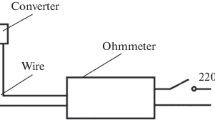Abstract
Carbon-carbon composites (C/C) are those that have carbonaceous matrix reinforced with carbon fiber. They are widely used in the aerospace field, due mainly to the properties such as low density, high stiffness, and excellent thermal resistance, in comparison to the ones with polymer or metallic matrix. They are obtained through composites of polymer matrix (thermoset or thermoplastic), from the heat treatment of carbonization. The objective of this work is to produce the C/C composite material from three different thermoplastic laminates (PEKK/CF, PEEK/CF and LMPAEK/CF) as well as to compare these materials with C/C composites obtained from thermoset matrices, to show their advantages and disadvantages in relation to them. Such comparison was substantiated with TGA, DSC, SEM and XRD analyzes. In this work, the TGA showed the proposed process presents a lower mass loss, resulting in a faster and cheaper process, comparing thermoplastic with thermoset laminates. The DSC tests provided the basis for establishing the different heating rates. Through the SEM images it was possible to analyze the carbonization process. Finally, analyzes of cyclic voltammetry were made; through a comparison with Platinum electrode, C/C electrodes proved to be suitable for this application. Also, electrodes obtained from PEEK/CF presented better electrochemical responses.







Similar content being viewed by others
References
Castanie B, Bouvet C, Ginot M (2020) Review of composite sandwich structure in aeronautic applications. Compos Part C Open Access 1:100004. https://doi.org/10.1016/j.jcomc.2020.100004
Kappel E (2019) Distortions of composite aerospace frames due to processing, thermal loads and trimming operations and an assessment from an assembly perspective. Compos Struct 220:338–346. https://doi.org/10.1016/j.compstruct.2019.03.099
Hou W, Xu X, Han X et al (2019) Multi-objective and multi-constraint design optimization for hat-shaped composite T-joints in automobiles. Thin-Walled Struct 143:106232. https://doi.org/10.1016/j.tws.2019.106232
Ulian G, Moro D, Valdrè G (2021) Electronic and optical properties of graphene/molybdenite bilayer composite. Compos Struct 255:112978. https://doi.org/10.1016/j.compstruct.2020.112978
Chen X, Wang Z, Wu J (2018) Processing and characterization of natural rubber/stearic acid-tetra-needle-like zinc oxide whiskers medical antibacterial composites. J Polym Res 25. https://doi.org/10.1007/s10965-017-1433-y
Li Y, Qi L, Song Y, Chao X (2017) Quantitative characterization of the carbon/carbon composites components based on video of polarized light microscope. Microsc Res Tech 80:644–651. https://doi.org/10.1002/jemt.22842
Buckley JD, Edie DD (1993) Carbon-Carbon Materials and Composites, 1st ed. Elsevier
Alghamdi A, Mummery P, Sheikh MA (2013) Multi-scale 3D image-based modelling of a carbon/carbon composite. Model Simul Mater Sci Eng 21:085014. https://doi.org/10.1088/0965-0393/21/8/085014
Jia Z, Yang C, Jiao J et al (2017) Rhein and polydimethylsiloxane functionalized carbon/carbon composites as prosthetic implants for bone repair applications. Biomed Mater 12:045004. https://doi.org/10.1088/1748-605X/aa6e27
Feng L, Li K-Z, Lu J-H, Qi L-H (2017) Effect of growth temperature on carbon nanotube grafting morphology and mechanical behavior of carbon fibers and carbon/carbon composites. J Mater Sci Technol 33:65–70. https://doi.org/10.1016/j.jmst.2016.08.015
Fitzer E (1987) The future of carbon-carbon composites. Carbon N Y 25:163–190. https://doi.org/10.1016/0008-6223(87)90116-3
Su Y, Li K, Zhang L et al (2017) Effect of microwave heating time on bonding strength and corrosion resistance of Ca-P composite layers for carbon/carbon composites. J Alloys Compd 713:266–279. https://doi.org/10.1016/j.jallcom.2017.04.189
Corral EL, Loehman RE (2008) Ultra-high-hemperature ceramic coatings for oxidation protection of carbon-carbon composites. J Am Ceram Soc 91:1495–1502. https://doi.org/10.1111/j.1551-2916.2008.02331.x
Wang T, Zhang S, Ren B et al (2020) Optimizing mechanical and thermal expansion properties of carbon/carbon composites by controlling textures. Curr Appl Phys 20:1171–1175. https://doi.org/10.1016/j.cap.2020.08.002
Voss H, Friedrich K (1987) On the wear behaviour of short-fibre-reinforced peek composites. Wear 116:1–18. https://doi.org/10.1016/0043-1648(87)90262-6
Jin YS, Bian CC, Zhang ZQ et al (2017) Preparation and characterization of bio-composite PEEK/nHA. IOP Conf Ser Mater Sci Eng 167:012006. https://doi.org/10.1088/1757-899X/167/1/012006
Mazur RL, Botelho EC, Costa ML, Rezende MC (2008) Avaliações térmica e reológica da matriz termoplástica PEKK utilizada em compósitos aeronáuticos. Polímeros 18:237–243. https://doi.org/10.1590/S0104-14282008000300009
Lee SM (1992) Handbook of Composite Reinforcements. Wiley
Tadini P, Grange N, Chetehouna K et al (2017) Thermal degradation analysis of innovative PEKK-based carbon composites for high-temperature aeronautical components. Aerosp Sci Technol 65:106–116. https://doi.org/10.1016/j.ast.2017.02.011
Panda JN, Bijwe J, Pandey RK (2017) Comparative potential assessment of solid lubricants on the performance of poly aryl ether ketone (PAEK) composites. Wear 384–385:192–202. https://doi.org/10.1016/j.wear.2016.11.044
Brownson DAC, Banks CE (2014) The Handbook of Graphene Electrochemistry. Springer, London, London
Aristov N, Habekost A (2015) Cyclic voltammetry - A versatile electrochemical method investigating electron transfer processes. World J Chem Educ 3:115–119
Kissinger PT, Heineman WR (1983) Cyclic voltammetry. J Chem Educ 60:702. https://doi.org/10.1021/ed060p702
Gooding JJ (2005) Nanostructuring electrodes with carbon nanotubes: A review on electrochemistry and applications for sensing. Electrochim Acta 50:3049–3060. https://doi.org/10.1016/j.electacta.2004.08.052
Calixto CMF, Mendes RK, de Oliveira AC et al (2007) Development of graphite-polymer composites as electrode materials. Mater Res 10:109–114. https://doi.org/10.1590/S1516-14392007000200003
de Souza LL, Forbicini CD (2014) Uso da voltametria cíclica e da espectroscopia de impedância eletroquímica na determinação da área superficial ativa de eletrodos modificados à base de carbono. Eclética Química 39:49–67
Fuertes AB, Centeno TA (1999) Preparation of supported carbon molecular sieve membranes. Carbon NY 37:679–684. https://doi.org/10.1016/S0008-6223(98)00244-9
Hao M, Li Y, Gao L et al (2020) In-situ hard template synthesis of mesoporous carbon/graphite carbon nitride (C/CN-T-x) composites with highphotocatalytic activities under visible light irridation. Solid State Sci 109:106428. https://doi.org/10.1016/j.solidstatesciences.2020.106428
Rajan AS, Sampath S, Shukla AK (2014) An in situ carbon-grafted alkaline iron electrode for iron-based accumulators. Energy Environ Sci 7:1110–1116. https://doi.org/10.1039/c3ee42783h
Acknowledgements
The authors acknowledge the financial support received from FAPESP (São Paulo Research Foundation under project 2017/16970-0 and 2018/07867-3), and CNPq (National Council for Scientific and Technological Development under project 303224/2016-9). Also, the authors acknowledge Toray Advanced Composites for the donated thermoplastic laminates.
Author information
Authors and Affiliations
Corresponding author
Additional information
Publisher’s Note
Springer Nature remains neutral with regard to jurisdictional claims in published maps and institutional affiliations.
Rights and permissions
About this article
Cite this article
dos Santos Conejo, L., de Meneses Neto, H.R., de Oliveira, J.B. et al. Production and characterization of carbon/carbon composites from thermoplastic matrices. J Polym Res 28, 123 (2021). https://doi.org/10.1007/s10965-021-02448-7
Received:
Accepted:
Published:
DOI: https://doi.org/10.1007/s10965-021-02448-7




